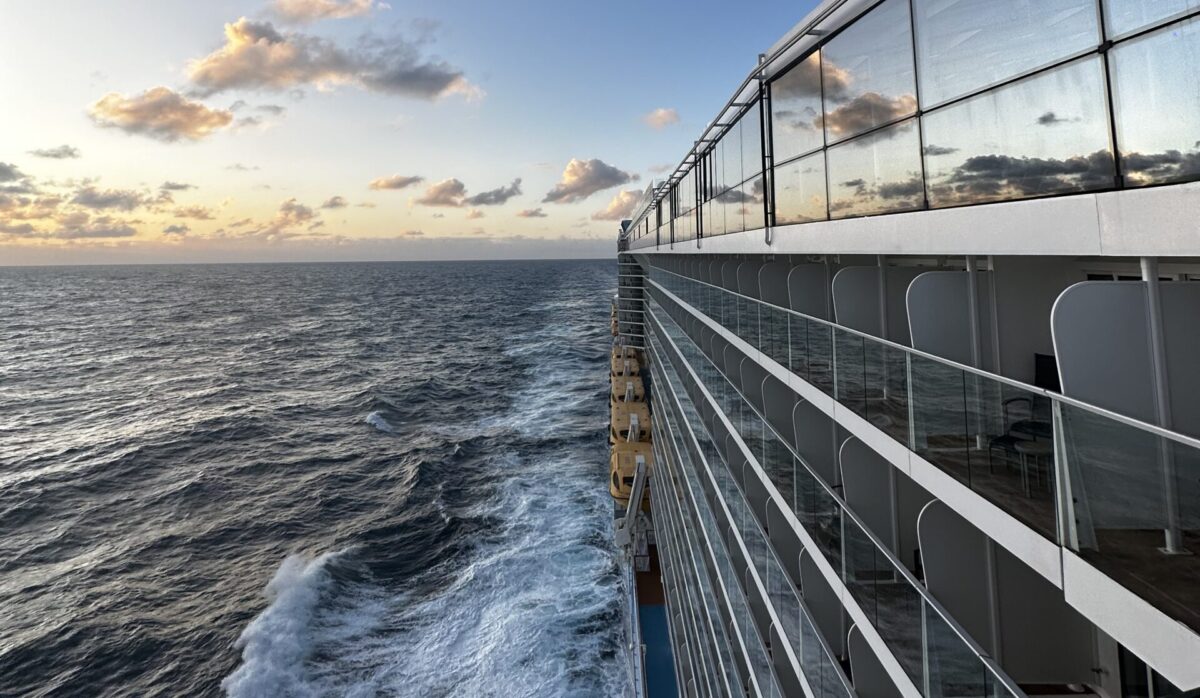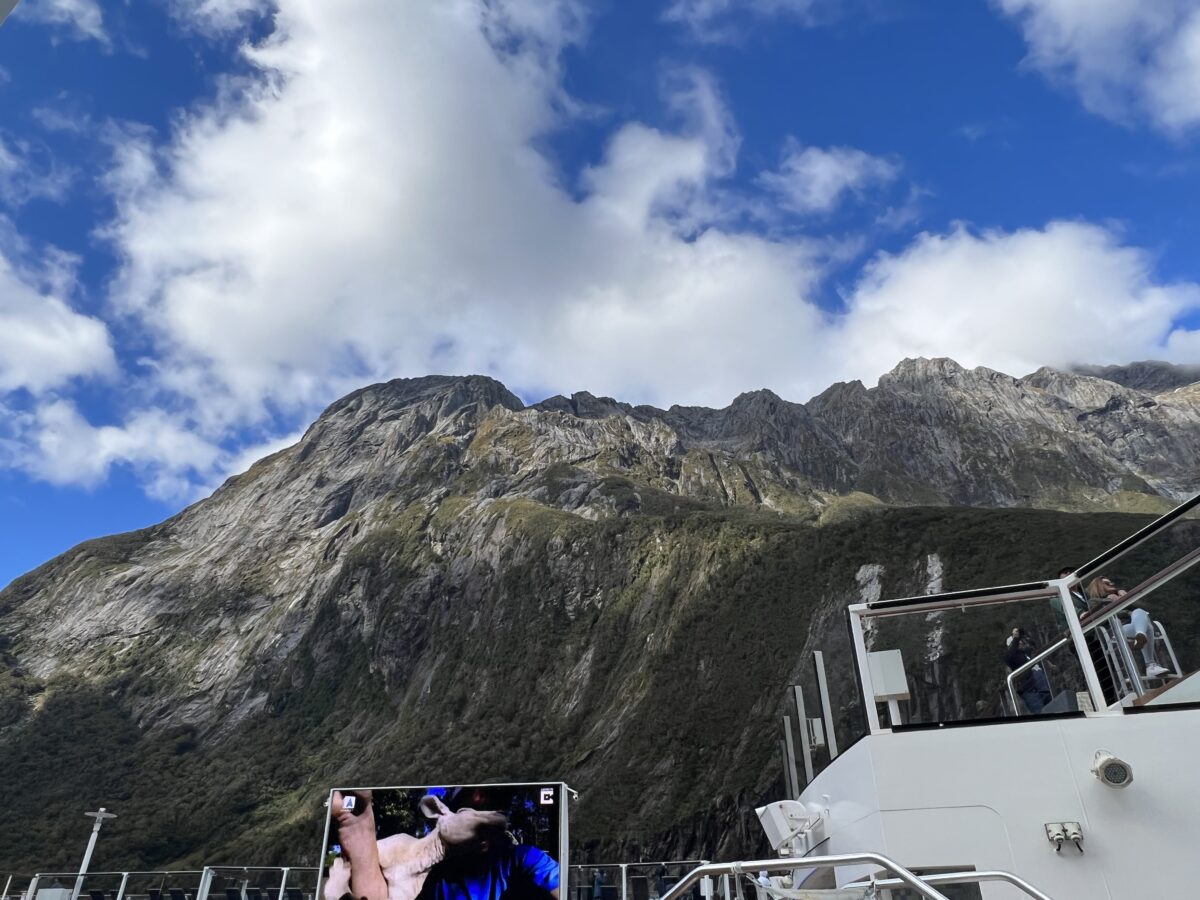
What To Pack For A Cruise in 2024: For Your Amazing Cruise Packing List: Royal Caribbean
September 27, 2023
Premier Pass Royal Caribbean: A Glitch, an Apology, and a Glimpse into Luxury
September 29, 2023Imagine cruising along the open sea, the sun shining, the waves gently rocking the ship… until you start feeling dizzy, nauseated, and your dream cruise turns into a nightmare. Welcome to seasickness, an unwelcome friend for some travelers. In this comprehensive guide, we’ll explore what causes seasickness, its physiological roots, and, most importantly, how to prevent it. Cruise with confidence, knowing you’re prepared to tackle seasickness head-on.
Understanding Seasickness: The Why and How
Seasickness is more than just a queasy feeling; it’s a complex physiological reaction to motion. its s a mismatch of information sent to the brain from all the human sources. picture this: When you’re inside a ship’s cabin, your eyes register no movement, but your inner ear senses the motion – This is because there is fluid in your ear that help you balance. Your brain receives mixed signals—your eyes say “still,” while your ear fluid detects motion. For some, this results in seasickness / motion sickness. This can also typically happen for some when trying for VR for first time.
But it’s not just confined to the sea; you can experience motion sickness in various forms, from cars to airplanes and even rides.
We must say information provided below is not medical advice and you must consult your doctor

Strategies to Prevent Seasickness: Your Cruise-Ready Toolkit
Now that we’ve unraveled the science behind seasickness, let’s dive into strategies to keep it at bay:
- Prioritize Rest: Before setting sail, ensure you’re well-rested. Fatigue can make you more susceptible to motion sickness, so wind down and prepare for your journey with plenty of sleep.
- Consider Antiemetic Drugs: Medications designed to prevent or treat motion sickness, known as antiemetic drugs, can be highly effective. Options include over-the-counter antihistamines like Bonine and Dramamine or prescription scopolamine drugs in pill or patch form. You Must Consult your doctor to find the right medication for you, considering any other medications you may be taking the information is not medical advice. You can see our packing guide where go over essential medications to bring on board – such as travel calm Here
- Embrace Fresh Air: When feeling seasick, head to an open deck or balcony and focus on the horizon. This helps align the signals your eyes and inner ear are sending to your brain. The breeze on your face can be particularly helpful.
- Choose Your Cabin Wisely: Midship and near the waterline cabins experience less side-to-side sway and up-and-down pitch motion. Consider requesting a room with a window or portal for a horizon view.
- Moderate Your Diet: Opt for light, bland foods like saltine crackers, plain bread, or pretzels. Avoid overeating, but maintain a small amount of food in your stomach. Ginger ale and peppermint can offer natural relief. Stay away from greasy, spicy, or acidic foods, as well as large meals and alcohol, as these can exacerbate symptoms.
- Explore Acupressure: Acupressure wristbands can apply pressure to a specific wrist point, helping to alleviate nausea—one of motion sickness’s hallmarks. These wristbands are available at pharmacies or online stores.
- Avoid Nausea Triggers: Stay away from stimuli that can trigger nausea, such as greasy, spicy, or acidic foods, as well as alcohol. Noxious odors and fellow passengers experiencing motion sickness can also exacerbate symptoms.
- Plan Your Cruise Carefully: If you’re prone to motion sickness, opt for larger ships and itineraries in calmer waters, like the Gulf of Mexico or the Caribbean Sea. Newer ships equipped with stabilization systems can help reduce motion discomfort.
- Food and drink you need try: We learnt from staff during our last sailing that eating Green apples, drinking Ginger Ale will help with the sick feeling. It absolutely worked for me, as well as (Royal) at guest services provides Free sea sickness tablets. As well as in the medical center having stronger medication if required.
Finding Your Balance – In the right room
When it comes to Royal Caribbean’s larger and newer ships, stability is one of their standout features. Let’s take the Quantum Class vessel, “Ovation of the Seas,” as an example. I once embarked on a journey to New Zealand aboard this remarkable ship, and we encountered a storm with monstrous waves relentlessly battering our vessel. It was a wild scene outside, but inside, it was a different story altogether. The ship remained remarkably steady, and you could hardly tell that we were navigating through such turbulent waters. Only for a brief period did playing pool become a challenge as the balls rolled slightly off course.
However, it’s worth noting that some passengers may be more sensitive to motion than others. That’s where choosing the right cabin location comes into play. In our experience, the best cabin option is situated around the middle of the ship, between floors 7 to 10, placing you right at the ship’s heart. When the vessel rocks, rises, and falls with the waves, you’ll feel the motion significantly less compared to those who are positioned forward (FWD) or aft (AFT) of the ship.
But fear not, even if you find yourself in a forward or aft cabin, it’s not the end of the world. It’s quite common for a large portion of passengers, especially during the first day of the cruise, to experience varying degrees of seasickness. Typically, it takes anywhere from 7 to 12 hours for your body to adjust to the motion of the ship. Everyone adapts at their own pace, and rest assured, it will all be okay. So, embrace the adventure, and let the gentle rocking of the ship lull you into the serene rhythm of life at sea.
FAQ: Your Seasickness Questions Answered
Q1: What exactly is seasickness? Seasickness is a form of motion sickness resulting from the brain receiving conflicting signals about your body’s movement. It’s common on cruises but can occur during any type of travel involving motion.
Q2: What causes seasickness? Seasickness occurs when your eyes perceive stillness while your inner ear senses motion. This sensory mismatch leads to symptoms like nausea, dizziness, and sweating. Various factors, including fatigue, diet, and the ship’s motion, can exacerbate it.
Q3: Are there medications to prevent seasickness? Yes, there are drugs like Travel Calm, Dramamine, and scopolamine, available as pills or patches by prescription. Consult your doctor to determine the most suitable option for your needs.
Q4: Can I take medications after feeling seasick, or should I take them in advance? For best results, take medications before experiencing motion sickness symptoms. If you know you’re prone to seasickness, take the medication before boarding your ship or embarking on a short trip.
Q5: Are there natural remedies for seasickness? Yes, natural remedies like ginger and peppermint can help alleviate symptoms. Fresh air and acupressure wristbands are also popular options.
Conclusion: Smooth Sailing Ahead
As we reach the end of our journey into the world of seasickness prevention, we invite you to embark on your next cruise with newfound confidence. Armed with expert tips and insights, you’re well-prepared to tackle seasickness and ensure that your cruise remains a dream voyage from start to finish.
Now, as fellow cruise enthusiasts, we’d love to hear from you. Do you suffer from seasickness, and are you planning to put our tips and tricks to the test on your upcoming voyage? Your experiences and feedback are invaluable to us.
Additionally, if you’ve found this article helpful and informative, please consider sharing it with your friends, family, and fellow travelers. We’re a small, passionate team dedicated to assisting others in making the most of their cruise adventures. Your support in spreading the word means the world to us.
Thank you for being a part of our cruise-loving community. Here’s to smooth sailing, breathtaking horizons, and unforgettable memories on the high seas
Sources: everydayhealth.com Unsplash.com
What next?
Check out our ultimate guide to the Deluxe Drink Package with Royal Here

Disclaimer
This article, “Seasickness Demystified: Discover Expert Tips to Prevent Seasickness on Your Cruise,” is intended for informational purposes only. The author and website do not claim to be medical professionals or experts. The information provided in this article is not a substitute for professional medical advice, diagnosis, or treatment.
Readers are solely responsible for conducting their own research and should consult a qualified medical professional or healthcare provider before considering any medications or drugs mentioned in this article or undertaking any preventive measures for seasickness.
The results of implementing the tips and strategies discussed in this article are not guaranteed, as individual reactions to seasickness prevention methods may vary.
This article is strictly a personal opinion piece based on research conducted via https://www.everydayhealth.com/digestive-health/easy-ways-to-keep-from-getting-seasick.aspx. It reflects the author’s interpretation of the information gathered and should not be considered as professional medical advice or endorsements.
Readers are urged to use their discretion and consult with healthcare professionals for personalized advice and recommendations regarding seasickness and its prevention. The author and website disclaim all liability for any actions taken by readers based on the information provided in this article.




